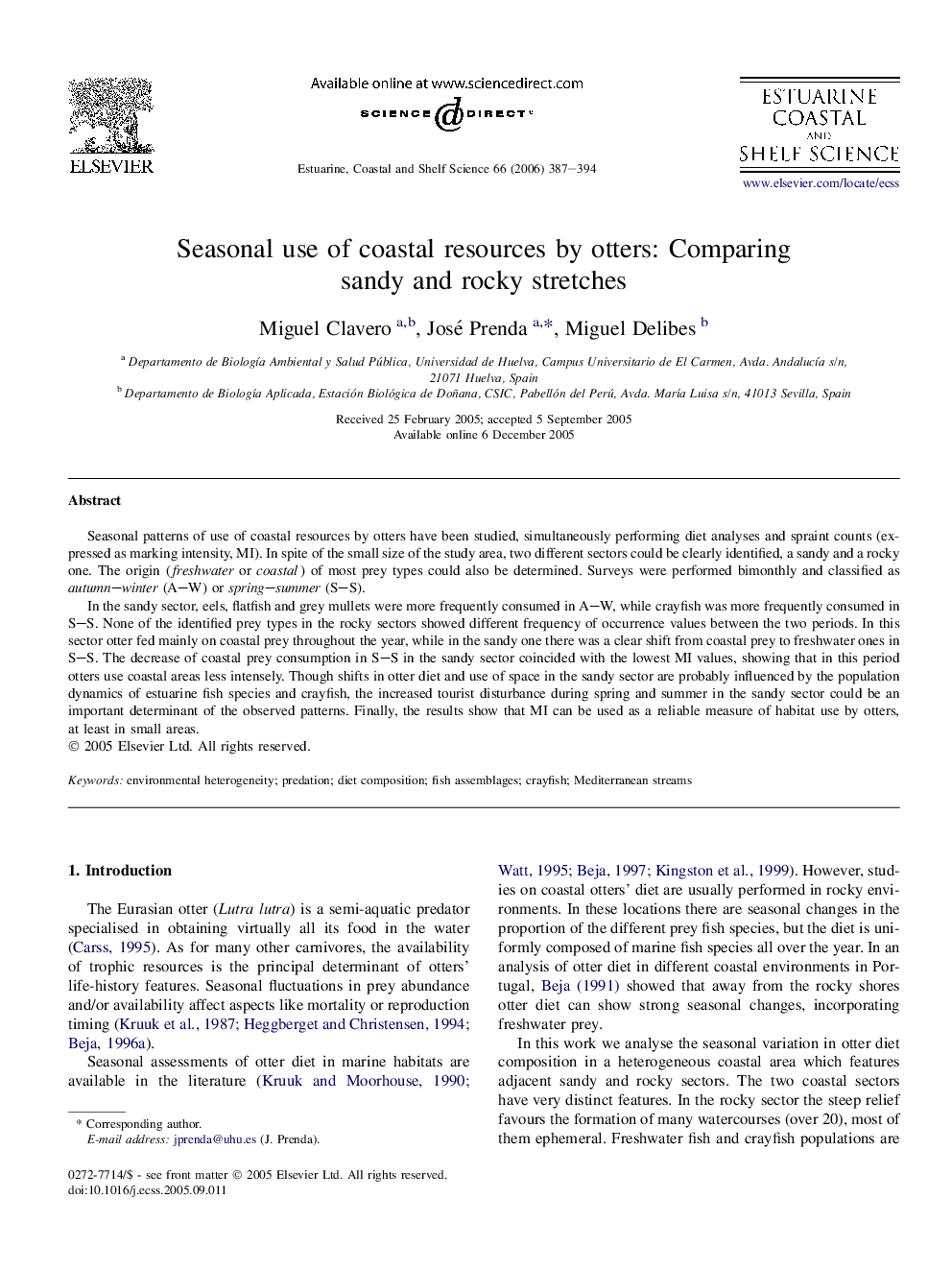| Article ID | Journal | Published Year | Pages | File Type |
|---|---|---|---|---|
| 4542527 | Estuarine, Coastal and Shelf Science | 2006 | 8 Pages |
Seasonal patterns of use of coastal resources by otters have been studied, simultaneously performing diet analyses and spraint counts (expressed as marking intensity, MI). In spite of the small size of the study area, two different sectors could be clearly identified, a sandy and a rocky one. The origin (freshwater or coastal) of most prey types could also be determined. Surveys were performed bimonthly and classified as autumn–winter (A–W) or spring–summer (S–S).In the sandy sector, eels, flatfish and grey mullets were more frequently consumed in A–W, while crayfish was more frequently consumed in S–S. None of the identified prey types in the rocky sectors showed different frequency of occurrence values between the two periods. In this sector otter fed mainly on coastal prey throughout the year, while in the sandy one there was a clear shift from coastal prey to freshwater ones in S–S. The decrease of coastal prey consumption in S–S in the sandy sector coincided with the lowest MI values, showing that in this period otters use coastal areas less intensely. Though shifts in otter diet and use of space in the sandy sector are probably influenced by the population dynamics of estuarine fish species and crayfish, the increased tourist disturbance during spring and summer in the sandy sector could be an important determinant of the observed patterns. Finally, the results show that MI can be used as a reliable measure of habitat use by otters, at least in small areas.
